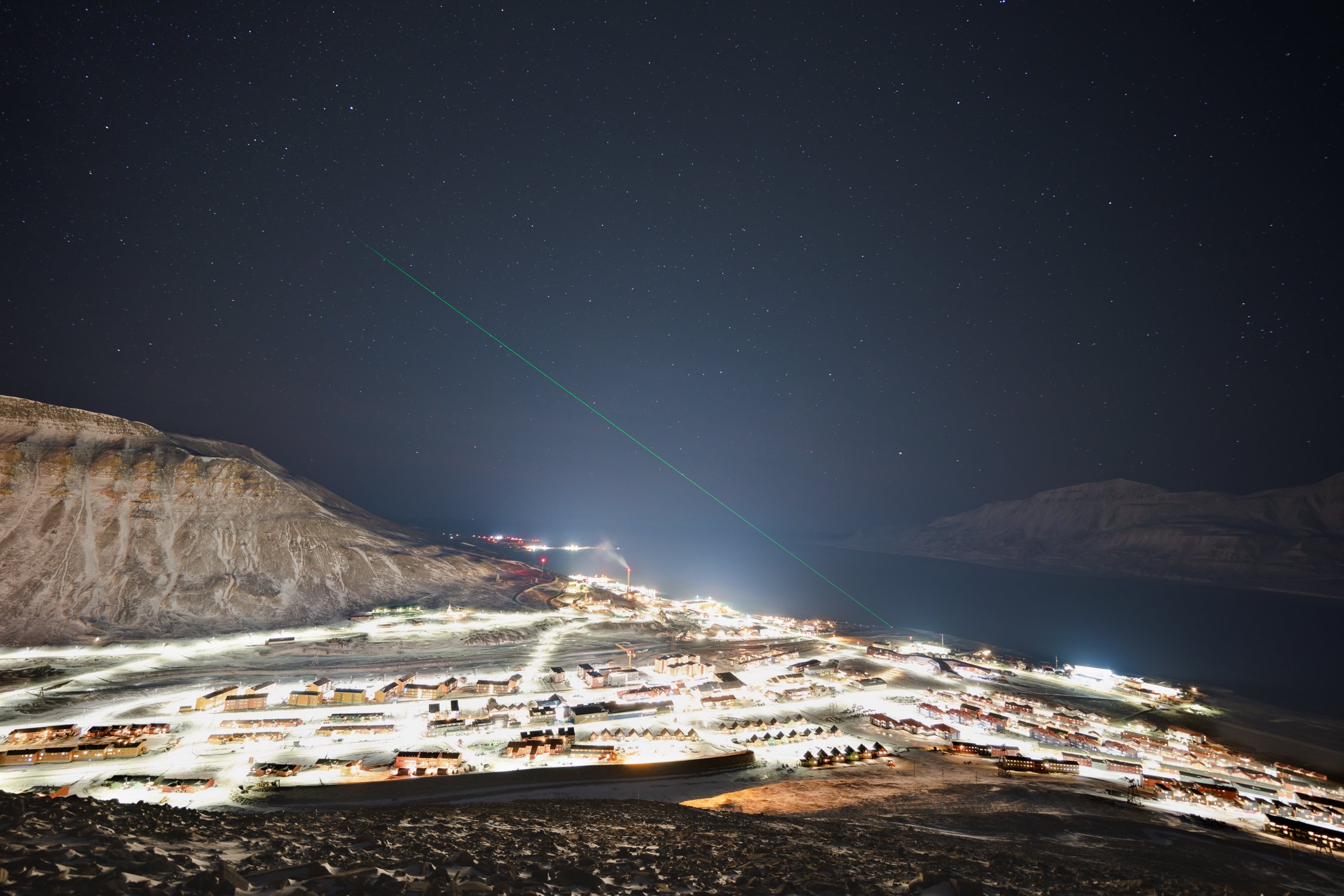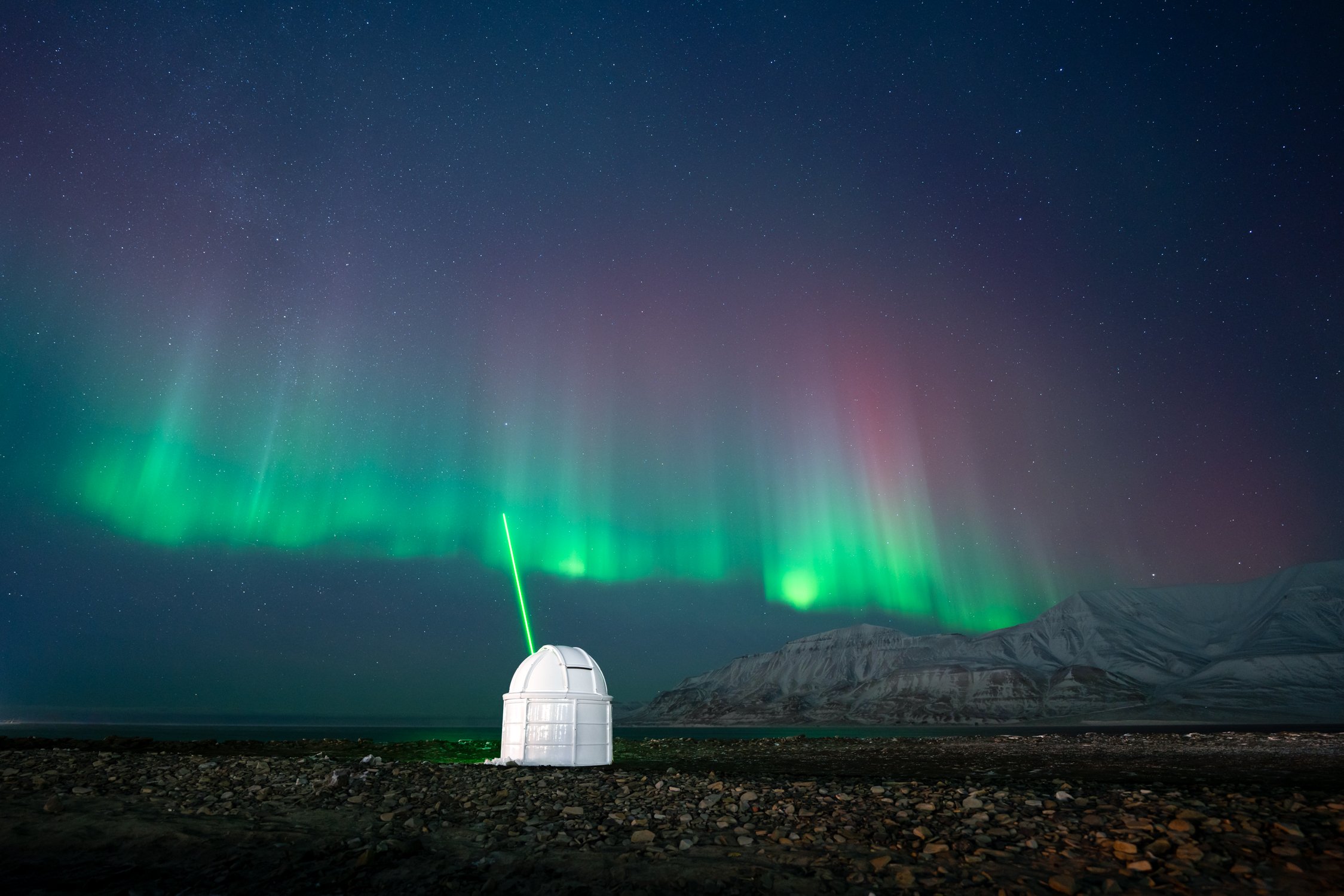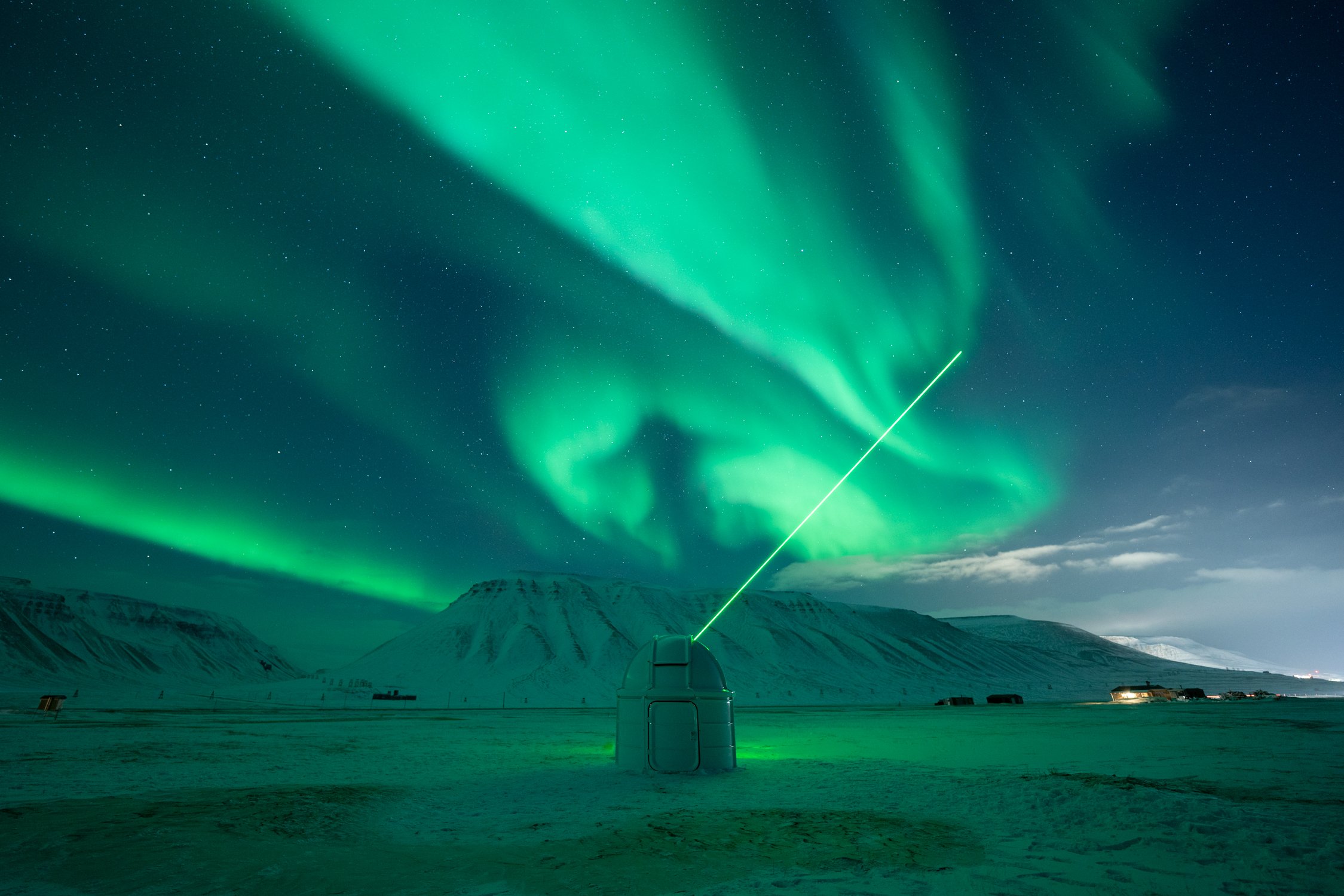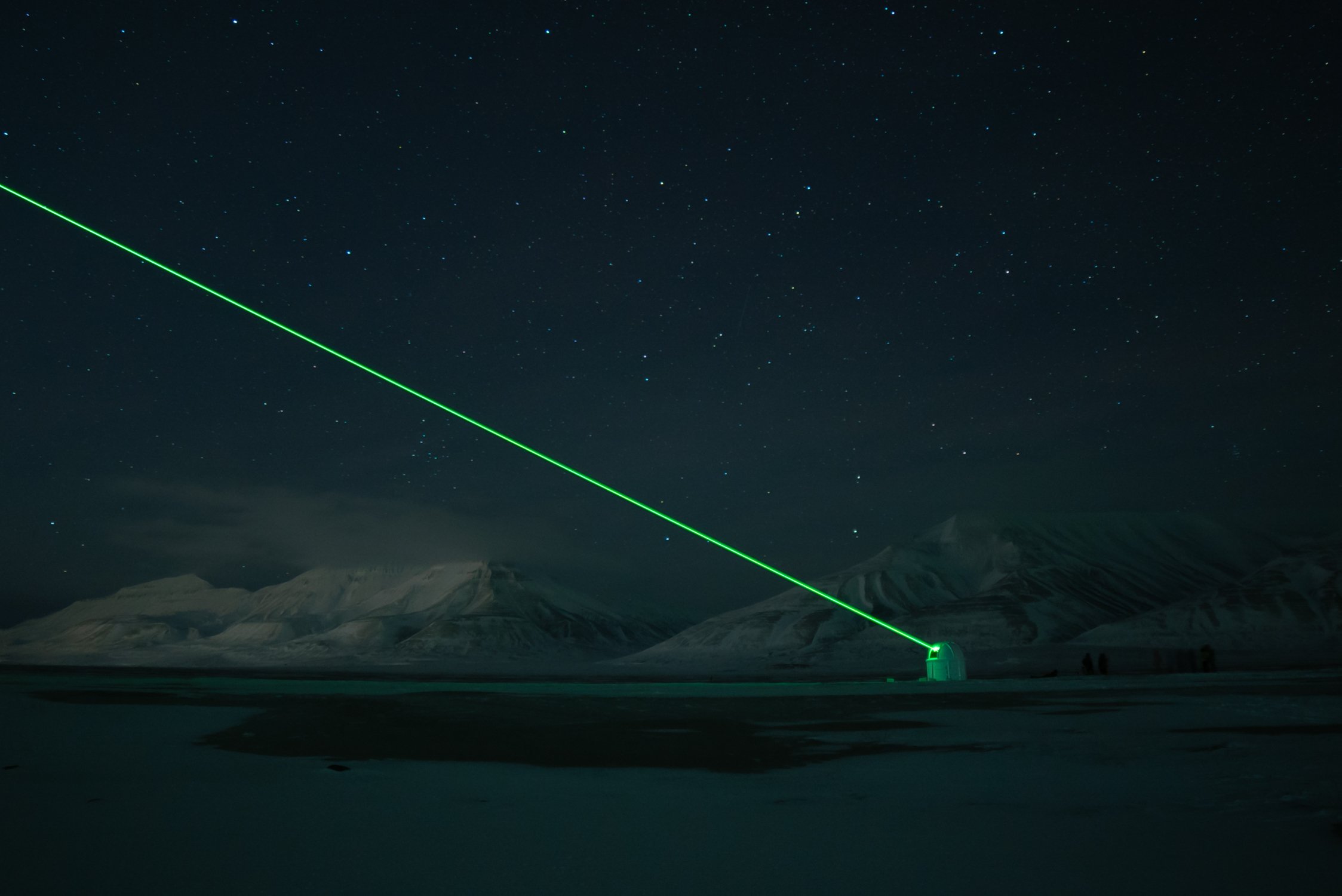Time Line
Interview with artist Jessica MacMillan
In November 2021 Artica resident Jessica MacMillan presented Time Line, a one-of-a-kind short term public project which took place for the first time in Longyearbyen. Drawing a line of light in the sky with a powerful 10-watt laser, Time Line marks the exact direction our solar system is moving in space. The laser is aimed at a particular coordinate in the sky: the solar apex, which marks the direction our sun is traveling in our stellar neighbourhood of the Milky Way Galaxy (and taking us along with it). The solar apex is located in our northern sky, between the constellations of Lyra and Hercules. As our planet spins and the stars rotate overhead, Time Line’s laser follows this motion, drawing a physical line of light along the trajectory of our planet, extending infinitely into space.
This line of light is an actual illumination of our physical timeline. We can look in the direction of our travel and see where our future will take place, somewhere along this thin path laid out before us. What will Svalbard be like—what will our world be like—down this line? The future, by its nature, is something we cannot see or know. While this is no new phenomenon, uncertainty about the future of our home world has come to define this moment we live in.
Time Line is an opportunity to experience looking into true infinity—a precise line showing you the way to the future.
This project is directly inspired by Svalbard. Specifically, by the work of two observatories nearby at the scientific research station in Ny-Ålesund, Svalbard, which MacMillan visited first hand in 2019. First, the Koldewey Aerosol Raman Lidar (KARL) operated by the institute AWIPEV, is an observatory that shoots a green LIDAR (a pulsed laser) ~90º up into the atmosphere to monitor pollution from sources like volcanoes, forest fires, and industry. Second, the Geodetic Earth Observatory, operated by the Norwegian Mapping Authority (Kartverket), is a radio telescope that monitors movements in Earth’s surface, the rotation of the planet—and in relation to this project—Earth’s exact position in space. Time Line brings together the visuals and concepts of these two observatories: KARLS’s monumental green laser that appears to extend infinitely into space, and the planetary focus of Kartverket’s geodetic research.
The green colour of the laser was chosen specifically because the goal of the project is to make something invisible become visible. Therefore, MacMillan opted for lime green with a 532nm wavelength, as the human eye is most sensitive to colours in this range. In addition, the colour is very close to the green of the aurora borealis: the iconic arctic phenomenon that is created by energised particles from the sun interacting with the planet’s magnetic field.
Photos: Preben Irgens
Time Line was hosted by Artica Svalbard and curated by Office for Contemprary Art Norway.
Jessica MacMillan
(b. 1987, New Hampshire, USA) is an artist and amateur astronomer based in Oslo, Norway. Through kinetic sculpture, 3D animation, and installation, MacMillan’s work investigates concepts in astronomy and planetary science. Using optical instruments, geophysical orientation, and ordinary found objects, she focuses on bridging the gap between our everyday lived experience and the context that contains us: on a tiny and fragile planet, in a massive solar system, within a galaxy among billions.
MacMillan holds an MFA in fine arts from the Academy of Fine Art in Oslo (2016), a BFA in sculpture and art history from the Massachusetts College of Art and Design, Boston (2010), and has studied astronomy through Arizona State University. Her works have been exhibited at BOA Galleri in Oslo, Norway; Galleri 54 in Gothenburg, Sweden; Skaftfell Center for Visual Art, Seydisfjordur, Iceland; Atelier Nord ANX, Oslo, Norway; Kunstnernes Hus, Oslo, Norway; and Kunsthal Charlottenborg, Copenhagen, Denmark; among others. Previously, she has also participated in residencies at ÖRES: Örö Island Residency Program, Finland; NBK Ny-Ålesund research station residency, Svalbard; and Skaftfell Center for Visual Art, Seydisfjordur, Iceland.





